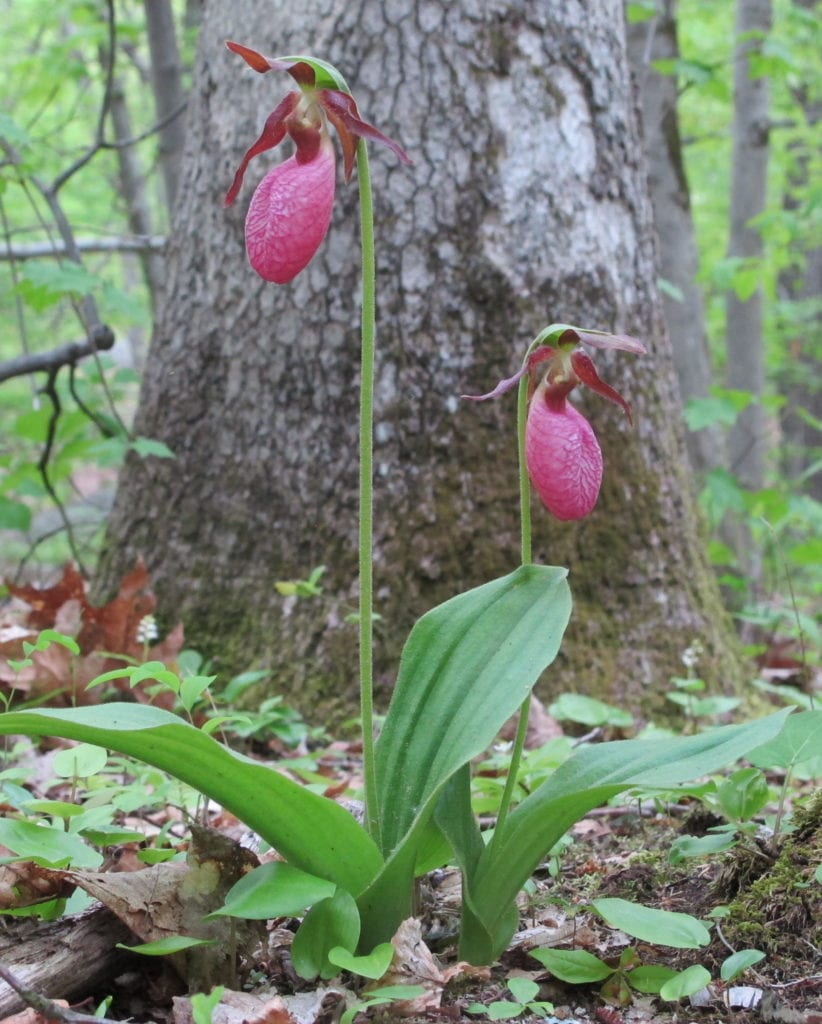Threats to New England wildflowers
Sloan MacRae, Carnegie
Museums of Pittsburgh
 A new study
featuring historical observations collected by the philosopher and author Henry
David Thoreau, combined with new observations, shows that spring wildflowers
may face challenges in a warming climate.
A new study
featuring historical observations collected by the philosopher and author Henry
David Thoreau, combined with new observations, shows that spring wildflowers
may face challenges in a warming climate.
Researchers at
Carnegie Museum of Natural History, Boston University, University of Maine,
Syracuse University, and University of Tennessee, Knoxville recently published
the study in the scientific journal, Ecology Letters,revealing that
understory wildflowers are less responsive to climate change than the trees
above them.
Conservation
biologists Richard Primack and Caitlin McDonough MacKenzie at Boston University
approached Mason Heberling, Assistant Curator of Botany at Carnegie Museum of
Natural History, with scientific observations initiated by Thoreau in Concord,
Massachusetts in the 1850s. The data includes tree and wildflower leaf out
dates measured for 37 separate years between 1852 to 2018.
Primarily as a
result of human activities, temperatures in Concord have warmed by 3 degrees
Celsius over the past century. Over this same time period, tree and wildflower
leaf out dates have shifted significantly.
“Wildflowers are now leafing out about one week earlier than 160 years ago, but the trees are leafing out two weeks earlier. Understory wildflowers need the sunny conditions before the trees leaf out for their energy budgets, but we didn’t know how a shadier spring would affect these plants on the ground,” says Caitlin McDonough MacKenzie.
The research
team compared Thoreau’s observations to photosynthetic data collected by
Heberling, and Susan Kalisz, at the University of Tennessee, Knoxville, in a
forest in Fox Chapel, Pennsylvania, near Pittsburgh, as part of a multi-year
field experiment. Heberling adapted these measurements to calculate how
temperature-driven shifts in trees leafing out has impacted wildflowers from
Thoreau’s time until now.
The combined
analysis shows that small differences in the responses of wildflowers versus
trees to a warming climate could be harming wildflower abundance and flowering
already, with greater effects in coming years.
“Combining our
work from Pittsburgh with Thoreau’s data revealed an overlooked, yet critical,
implication of how our changing climate is affecting native wildflowers beloved
by so many people, right here at home,” says Mason Heberling.
As the climate
warms, the window of time between wildflower emergence and tree leaf out will
likely shorten, leaving wildflowers less time to photosynthesize in the spring.
Current climate models predict a 2.5 to 4.5 degrees Celsius temperature
increase in the northeastern U.S. by 2080, potentially more than double the
temperature increase we have seen over the past century. What does this mean
for the future of forests and wildflowers? Further studies are ongoing, but we
may see fewer wildflowers in the future.
Heberling,
J.M., McDonough MacKenzie, C., Fridley, J.D., Kalisz, S. & Primack, R.B.
2019. Phenological mismatch with trees reduces wildflower carbon budgets. Ecology
Letters, in press. doi:
10.111/ele.13224 https://onlinelibrary.wiley.com/doi/10.1111/ele.13224
Richard Primack, a co-author of the study, will be speaking at Carnegie Museum of Natural History on Monday, February 11that noon as part of the R.W. Moriarty Science Seminar series. R.W. Moriarty Science Seminars are free and open to the public.
This
research was partly based upon work supported by the National Science
Foundation under Awards No. DBI-1612079 to M. Heberling, and DEB-1457531
and DEB-144552 to S. Kalisz. Any opinions, findings, and conclusions or
recommendations expressed in this material are those of the author(s) and do
not necessarily reflect the views of the National Science Foundation.